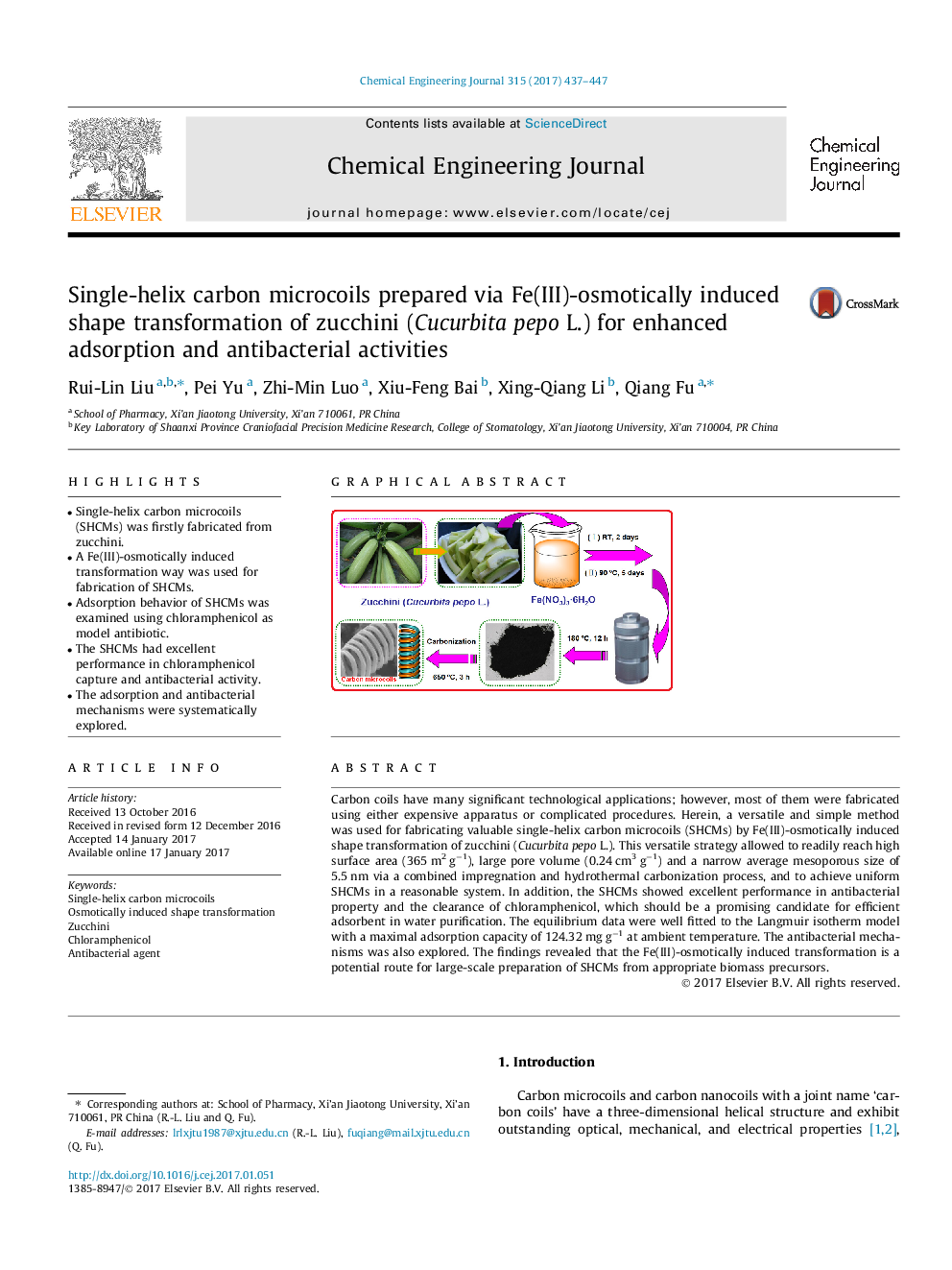| Article ID | Journal | Published Year | Pages | File Type |
|---|---|---|---|---|
| 6466399 | Chemical Engineering Journal | 2017 | 11 Pages |
â¢Single-helix carbon microcoils (SHCMs) was firstly fabricated from zucchini.â¢A Fe(III)-osmotically induced transformation way was used for fabrication of SHCMs.â¢Adsorption behavior of SHCMs was examined using chloramphenicol as model antibiotic.â¢The SHCMs had excellent performance in chloramphenicol capture and antibacterial activity.â¢The adsorption and antibacterial mechanisms were systematically explored.
Carbon coils have many significant technological applications; however, most of them were fabricated using either expensive apparatus or complicated procedures. Herein, a versatile and simple method was used for fabricating valuable single-helix carbon microcoils (SHCMs) by Fe(III)-osmotically induced shape transformation of zucchini (Cucurbita pepo L.). This versatile strategy allowed to readily reach high surface area (365 m2 gâ1), large pore volume (0.24 cm3 gâ1) and a narrow average mesoporous size of 5.5 nm via a combined impregnation and hydrothermal carbonization process, and to achieve uniform SHCMs in a reasonable system. In addition, the SHCMs showed excellent performance in antibacterial property and the clearance of chloramphenicol, which should be a promising candidate for efficient adsorbent in water purification. The equilibrium data were well fitted to the Langmuir isotherm model with a maximal adsorption capacity of 124.32 mg gâ1 at ambient temperature. The antibacterial mechanisms was also explored. The findings revealed that the Fe(III)-osmotically induced transformation is a potential route for large-scale preparation of SHCMs from appropriate biomass precursors.
Graphical abstractDownload high-res image (137KB)Download full-size image
